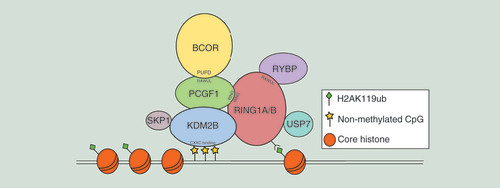Figures & data
Table 1. PRC 1.1 complex components.
Table 2.
BCOR mutations in different tumor hystotypes.



